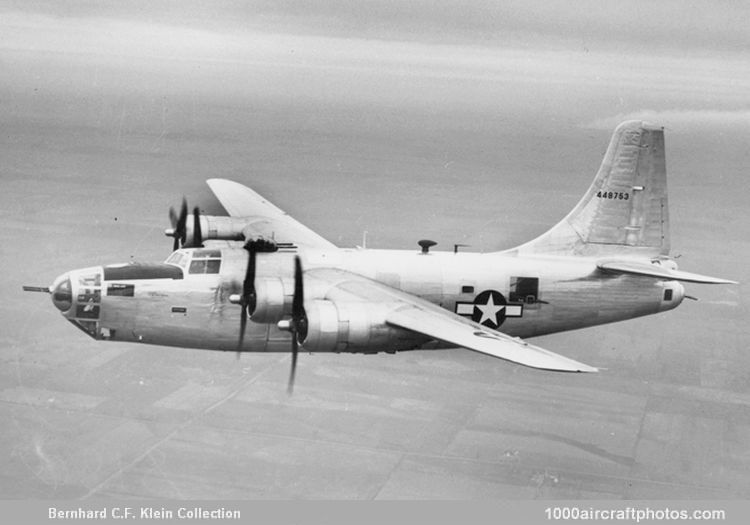01/15/2019. Remarks by Johan Visschedijk: "It was slightly ironic that, although as early as 1942 the USAAF decided that the Liberator would have greater stability with a single fin-and-rudder assembly, it went through its entire operational career with the USAAF in its original twin-tailed configuration.
The Ford Motor Company at Willow Run near Detroit, Michigan, was the third member of the Liberator Production Pool Program. In early 1943, Ford initiated tests to prove the single fin-and-rudder assembly stability and modified an early B-24D with a complete tail unit taken from a Douglas B-23 Dragon. Known as the B-24ST (Single Tail), it was first flown on March 6, 1943.
Following a change to a C-54 tail plane and a new rudder, the rear fuselage was attached to another, later production airframe. This B-24D-40-CO (serial 42-40234) was also fitted with more powerful 1,200 hp Pratt & Whitney R-1830-65 engines and the power-operated nose turret of later Liberators, while retaining the Consolidated tail turret. Designated XB-24K, the 'new' aircraft was first flown on September 9, 1943. Tests at Eglin revealed that the new tail configuration improved aircraft handling and field of fire for the tail guns. The XB-24K was 11 mph (18 kmh) faster than previous Liberators, and possessed a greatly improved climb rate.
In April 1944, the decision was taken that all future Liberators would have a single vertical tail, and a redesign of the XB-24K for production by Ford resulted in the XB-24N. This differed in having 1,350 hp R-1830-75 engines, modified nose and tail gun positions, the rear turret becoming something like that on the B-17, while a unique ball turret with the usual twin 0.50 in (12.7 mm) guns was mounted in the nose.
The prototype XB-24N (serial 44-48753) was delivered on November 24, 1944, seven YB-24Ns (44-52053 to 44-52059) were built by Ford before Liberator production ceased on May 31, 1945, orders for 5,168 B-24N-FO bombers were cancelled."
